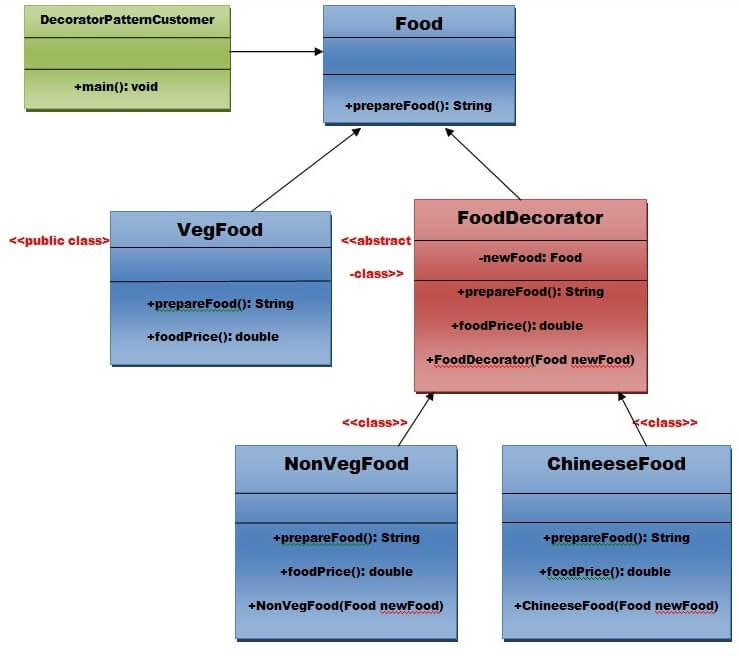Decorator Pattern
A Decorator Pattern says that just “attach a flexible additional responsibilities to an object dynamically”.
In other words, The Decorator Pattern uses composition instead of inheritance to extend the functionality of an object at runtime.
The Decorator Pattern is also known as Wrapper.
Advantage of Decorator Pattern
- It provides greater flexibility than static inheritance.
- It enhances the extensibility of the object, because changes are made by coding new classes.
- It simplifies the coding by allowing you to develop a series of functionality from targeted classes instead of coding all of the behavior into the object.
Usage of Decorator Pattern
It is used:
- When you want to transparently and dynamically add responsibilities to objects without affecting other objects.
- When you want to add responsibilities to an object that you may want to change in future.
- Extending functionality by sub-classing is no longer practical.
UML for Decorator Pattern:

Step 1:Create a Food interface.
Step 2: Create a VegFood class that will implements the Food interface and override its all methods.
Step 3:Create a FoodDecorator abstract class that will implements the Food interface and override it’s all methods and it has the ability to decorate some more foods.
Step 4:Create a NonVegFood concrete class that will extend the FoodDecorator class and override it’s all methods.
Step 5:Create a ChineeseFood concrete class that will extend the FoodDecorator class and override it’s all methods.
Step 6:Create a DecoratorPatternCustomer class that will use Food interface to use which type of food customer wants means (Decorates).
Output
